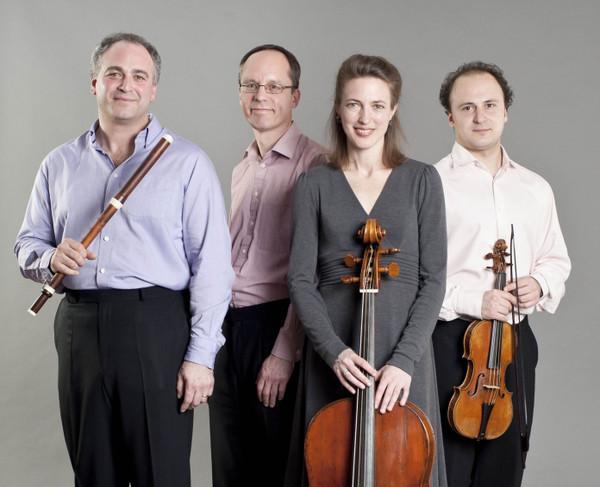
York Early Music Festival: Florilegium, National Centre for Early Music, York, July 14
FLORILEGIUM is celebrating its 30th anniversary this year. So it was a privilege, not to say entirely appropriate, to have the group in this year’s festival, here cut down to four players for an evening of Bach trio sonatas.
The standard format for the trio sonata is two soloists with continuo (harpsichord and a bass instrument) providing the third “voice”, hence a group of four. So it is hardly surprising that Bach’s Trio Sonatas for organ have been constantly rearranged since Mozart’s time onwards: the ear more easily disentangles the lines when they are played on separate instruments (although I cast no aspersions on the ability of organists to play clearly).
Florilegium’s own arrangement in E minor of the trio sonata, BWV 526, with flute and violin in the leading roles, makes a tasty concoction (even if the original is in C minor). Ashley Solomon’s Baroque flute, made of wood naturally, has a smoother tone than the more incisive modern instrument, which means it provides a satisfying blend with the violin of Bojan Čičić, although both voices remain distinct. They wove around each other engagingly here, above more run-of-the-mill continuo.
But this was a mere aperitif. A lilting Largo led succulently into the Trio Sonata in G, BWV
1038 (written for these specific instruments), before a galloping Vivace. The Gute Nacht theme from Bach’s motet Jesu, Meine Freude emerged with total clarity in the Adagio, pizzicato on Reiko Ichise’s viola da gamba, which then enjoyed an active role in the final Presto.
The gamba enjoyed a more complete spotlight in the last of three sonatas Bach wrote for it,
BWV 1029, in G minor. Ichise brought immense enthusiasm to her task and Steven Devine’s harpsichord followed suit. But there was no lack of shading amongst the energy. The central Adagio was taken exceptionally slowly, which allowed its ornamentation to breathe, and the finale was firmly signposted despite its pace.
The extraordinary trio sonata from The Musical Offering, with all four movements derived from a single theme, made an exciting conclusion. The players switched neatly in and out of the texture during the first Allegro and went hell for leather in the final fugue.
The Andante was never more reminiscent of the nocturnal bass arioso in the St John Passion, beautifully scented. As if that were not enough, we then had a rumbustious Leclair encore for contrast.
Review by Martin Dreyer
Available online on demand until August 13 at ncem.co.uk/yemf
